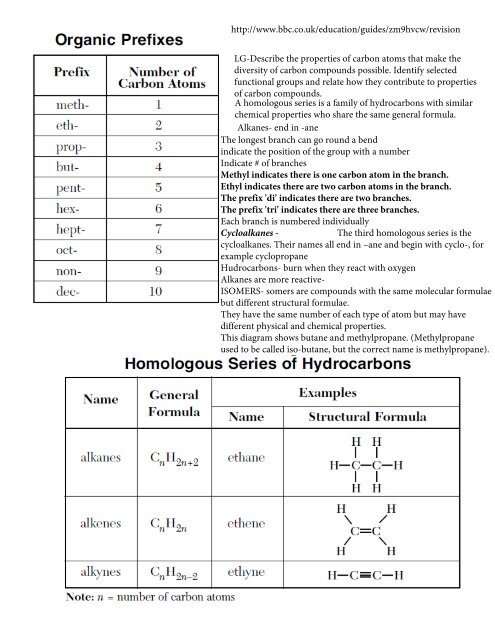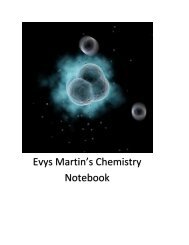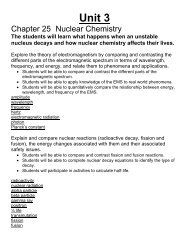You also want an ePaper? Increase the reach of your titles
YUMPU automatically turns print PDFs into web optimized ePapers that Google loves.
http://www.bbc.co.uk/education/guides/zm9hvcw/revision<br />
LG-Describe the properties of carbon atoms that make the<br />
diversity of carbon compounds possible. Identify selected<br />
functional groups and relate how they contribute to properties<br />
of carbon compounds.<br />
A homologous series is a family of hydrocarbons with similar<br />
chemical properties who share the same general formula.<br />
Alkanes- end in -ane<br />
The longest branch can go round a bend<br />
indicate the position of the group with a number<br />
Indicate # of branches<br />
Methyl indicates there is one carbon atom in the branch.<br />
Ethyl indicates there are two carbon atoms in the branch.<br />
The prefix 'di' indicates there are two branches.<br />
The prefix 'tri' indicates there are three branches.<br />
Each branch is numbered individually<br />
Cycloalkanes -<br />
The third homologous series is the<br />
cycloalkanes. Their names all end in –ane and begin with cyclo-, for<br />
example cyclopropane<br />
Hudrocarbons- burn when they react with oxygen<br />
Alkanes are more reactive-<br />
ISOMERS- somers are compounds with the same molecular formulae<br />
but different structural formulae.<br />
They have the same number of each type of atom but may have<br />
different physical and chemical properties.<br />
This diagram shows butane and methylpropane. (Methylpropane<br />
used to be called iso-butane, but the correct name is methylpropane).








